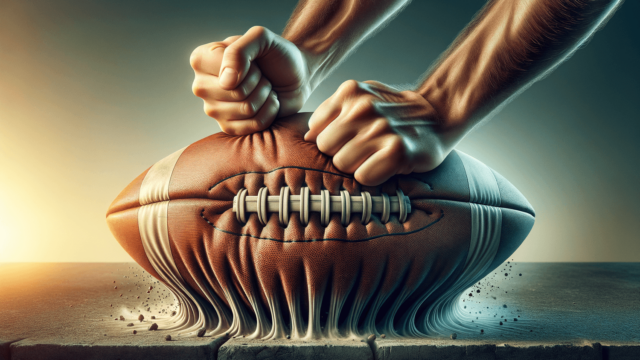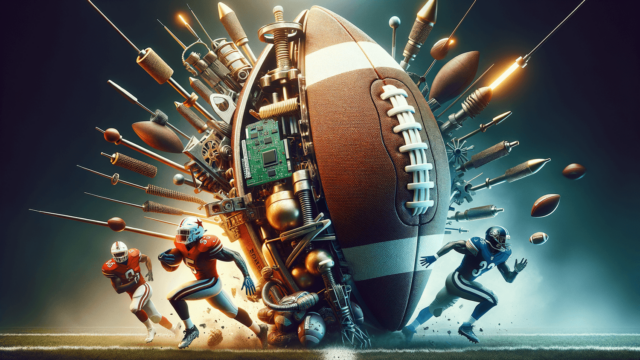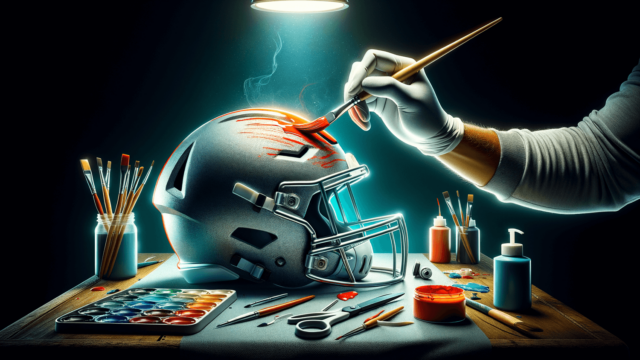
To condition a leather football, follow these steps: 1) Clean the ball with a damp cloth to remove dirt, 2) Apply a leather conditioner evenly over the entire surface, 3) Allow the conditioner to soak in for a few minutes, and 4) Buff the ball with a dry cloth to remove any excess conditioner and restore shine.
Introduction
Conditioning a leather football is essential for maintaining its durability, performance, and appearance. In this guide, we’ll discuss the steps to properly condition your leather football to keep it in optimal condition.
Step 1: Cleaning your Leather Football
To begin, you need to clean the surface of the ball to prepare it for conditioning. Use a soft, damp cloth to gently remove dirt, grime, or debris. Avoid using any harsh chemicals or detergents as they may damage the leather.
Key Points
- Use a soft, damp cloth.
- Avoid harsh chemicals or detergents.
Step 2: Applying Leather Conditioner to the Football
Apply a high-quality leather conditioner to the entire surface of the ball using a clean cloth or sponge. Ensure that it’s evenly distributed and covers all areas of the leather. Leather conditioners can be found at sporting goods stores or online.
Key Points
- Use a high-quality leather conditioner.
- Distribute evenly across the leather surface.
Step 3: Allowing the Conditioner to Soak In
Leaving the conditioner to soak into the leather is crucial for optimal results. Allow the conditioner to sit on the ball’s surface for a few minutes, as specified by the product’s instructions. This step ensures that the nutrients and oils in the conditioner penetrate the leather and help maintain its suppleness.
Key Points
- Allow the conditioner to soak in.
- Follow product instructions for soaking time.
Step 4: Buffing the Leather Football
After the leather has absorbed the conditioner, use a clean, dry cloth to gently buff the surface of the ball. This step removes any excess conditioner and restores the leather’s shine, giving it a polished and well-maintained appearance.
Key Points
- Use a clean, dry cloth for buffing.
- Remove excess conditioner and restore shine.
Additional Tips for Maintaining Leather Footballs
Apart from conditioning, there are other factors to consider for the long-term care and performance of your leather football. Here are some tips to further ensure the longevity of your ball:
Proper Storage
Store your leather football in a cool, dry place, away from direct sunlight or extreme temperatures. Exposure to these elements can cause the leather to dry out, crack, or fade over time. Ensure proper air circulation around the ball to prevent the growth of mold or mildew.
Avoid Submerging in Water
Avoid submerging your leather football in water, as this can cause the leather to stretch, deform, or weaken. If the ball gets wet, dry it gently with a towel and allow it to air-dry completely before storing it away.
Regular Inspections
Perform periodic checks on your ball for any signs of wear, tear, or damage. This can help you identify and address issues before they become more severe, prolonging the ball’s lifespan and ensuring consistent performance on the field.
When to Replace Your Leather Football
While proper conditioning and maintenance can significantly extend the life of a leather football, it will eventually wear out and need replacing. Be aware of the following signs that it’s time for a new ball:
- Severe tears or cracks in the leather surface.
- Loss of air pressure or consistent deflation.
- Stitching coming undone, exposing the interior of the ball.
- Excessive softness, making it difficult to grip and play with.
Conclusion
Remember that regular care for your leather football is crucial for its performance and durability. By following the steps and tips provided, you can ensure that your ball remains in optimal condition for as long as possible, allowing you to enjoy playing the game with a reliable football.
FAQ Section
In this section, we address a few commonly asked questions that readers may have after going through our guide on how to condition and maintain a leather football.
How often should I condition my leather football?
It’s generally recommended to condition a leather football every 3-6 months, depending on usage and environmental conditions. However, if the ball consistently gets exposed to damp or humid conditions or shows signs of drying, you might need to condition it more frequently.
What type of leather conditioner should I use?
Choose a high-quality leather conditioner specifically formulated for sports equipment or leather goods. Some popular brands include Leather Honey Leather Conditioner, Lexol, and Fiebing’s. These products are designed to nourish and protect leather, ensuring optimal care for your football.
Can I use petroleum jelly as a substitute for leather conditioner?
While petroleum jelly can provide temporary protection and shine, it’s not recommended as a long-term substitute for a dedicated leather conditioner. Petroleum jelly doesn’t possess the same nourishing and protecting properties as a high-quality leather conditioner and may lead to unexpected damage to the leather over time.
What if I accidentally use a harsh cleaner to clean my leather football?
If you’ve used a harsh cleaner on your leather football, immediately wipe the ball off with a damp cloth to remove the cleaner. Allow the ball to dry completely, then apply a leather conditioner as instructed in our guide. Keep an eye on the ball for any adverse effects or discoloration and avoid using harsh cleaners in the future.
How do I properly inflate and maintain air pressure in my leather football?
To inflate your leather football, use a hand or electric pump with a compatible needle. Insert the needle gently into the ball’s inflation valve and pump to the recommended air pressure—usually between 8.7 to 16.0 PSI, depending on the ball. Remove the pump and ensure the valve closes completely. Check the ball’s pressure periodically and adjust as needed. Be cautious not to overinflate, as this can damage the ball’s leather and inner bladder.
Featured Posts
- No pillar pages found.





